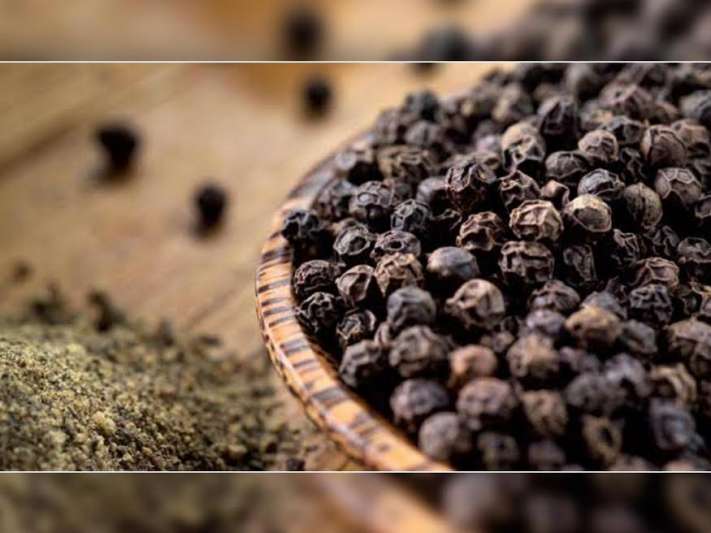

black pepper
It makes you sneeze, makes you reach for that glass of water, and is the most commonly used seasoning ingredient after salt. Yes, I am talking about the ‘King of Spices’, the black pepper. The tiny hard nut-like spice has journeyed thousands of miles and thousands of years, finally making its way to your table and kitchen shelves. Well, curious? Read on to discover the history of the spice, that brings out the essence of India.
Archaeological evidence of people using pepper goes back to at least 3000 BCE in India. Thought its origin of usage remains a mystery, it remains a significant part of the Indian cuisine. In fact, the word ‘pepper’ is derived from ‘peepli’ which means energy in Dravidian languages.
It is known that pepper was exported, but to what extent continues to stand as an enigma. Nonetheless, signs of an ancient pepper trade from India to Egypt have been found, including the peppercorns that had been stuffed into the nostrils of Ramses the Great (1303-1213 BC) when he was mummified.
When Rome was attacked in 410 AD, by the Huns tribe, to lift the siege and prevent the city from being sacked, along with gold, silver, silk, and hides, the Romans paid” 3000 pounds of pepper.” Negotiations soon broke down again, however, and the siege was resumed. Eventually the Eternal City was sacked. With the fall of Rome’s imperial power, other groups began to take over the spice trade. Under the unifying influence of Islam, Arabs organised into a dominant force in the trade of pepper.
In 1498, the Portuguese explorer, Vasco de Gama, discovered a trade route to India that led ships around the Cape of Good Hope. He had bought vast amounts of jewellery and gems, but was utterly disappointed when he could not find any buyers. Crestfallen, he exchanged the jewellery and gems for pepper. When he returned home he found out that the pepper he bought was 60 times more valuable that the jewellery he exchanged it for.
Dockworkers of the 16th century were subjected to a dress code that demanded workers wear clothing without pockets or cuffs to prevent stealing valuable peppercorns. The master spice was used to pay rent and was often included in the dowry of a bride.
The spice was once commonly known as “black gold” on account of the fact that only the extremely wealthy could afford it. Eventually it made its way into the new world and to the common man’s table. Today, Vietnam is the largest producer of the spice in the world with 34%, followed by India with 19%.
Inspiration - the word has a different meaning in every dictionary. Often, a moment of…
The clever plotlines, the dance numbers, the relationships - these are just some of the…
If you're planning a getaway from Visakhapatnam, look no further than Khammam, a must-visit historical…
Delhi Capitals (DC) vs Kolkata Knight Riders (KKR) is another interesting match-up for the fans,…
Visakhapatnam is set to emerge as a global hub for cloud and AI data services,…
A family residing in Visakhapatnam, with members holding both Pakistani and Indian citizenship, met City…
Leave a Comment